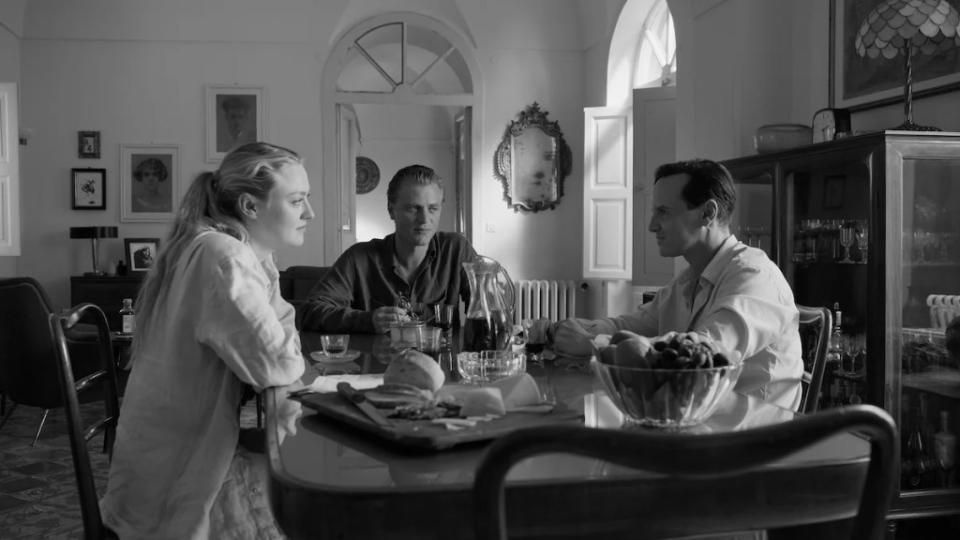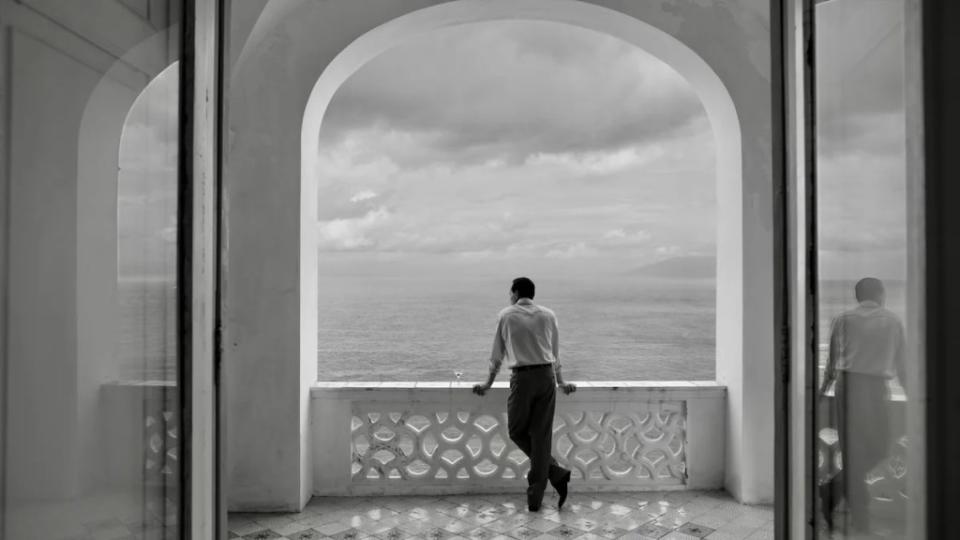‘Ripley’ Review: Andrew Scott Is a Magnetic Sociopath in Gorgeous Netflix Limited Series
What are you seeing? That question drives “Ripley,” the eight-episode limited series made for Showtime but premiering on Netflix on Thursday, April 4.
This third filmed adaptation of Patricia Highsmith’s 1955 novel “The Talented Mr. Ripley” looks like more of a character study than a crime spree or Italian travelogue, but when viewed from different angles it’s those things too. We spend more time just hanging with sociopath imposter Tom Ripley here than in any of the previous, shorter-by-definition feature film productions (the 1999 “Talented Mr. Ripley” and 1960 “Purple Noon” from the same source, “The American Friend” and “Ripley’s Game” from a sequel in the five-book series), and are thereby drawn complicitly deeper into his viewpoint than ever. Finding the true Tom remains an elusive errand, though. Highsmith would have liked that.
Set in 1960 and shot in black-and-white, the production strives to impose a dark dread on its gorgeous locations, yet the careful composition and lighting of each frame screams ART louder than noir or neorealism. Indeed, the show references Caravaggio and Picasso like a drunk docent, the former representing its obsession with illumination and murder, the latter its faceted personality theme. There is mess, but for the most part this show is aiming for masterpiece status.
Which is kind of glorious. But does “Ripley” still bring the suspense? Yes, at times excruciatingly well. This is also a leisurely, luxurious Italian idyll, however, and if you’re not into savoring Visconti quality sets and sidewalk espresso over eight hours, it may feel overindulgent. Yet isn’t that what Highsmith always wanted for the character, who trades his subsistence grifting, New York existence for the good life? Forgery, killing and eluding capture are merely the means to that selfish end.
Adapter-director-showrunner Steven Zaillian (“The Night Of”) gets this better than anyone who’s made a Ripley movie. He immerses Tom, and by extension us, in the world of wealth and beauty he’ll do anything to make his, then with impish regularity forces him to flee from it or get caught.
Andrew Scott does a fine job maintaining the character’s resting paranoia, while straightforwardly detailing cunning and shape-shifting abilities that most actors would play with criminal overconfidence. Scott has a babyface and liquid gaze that can go perfectly blank while Ripley calculates who he should be for whoever’s coming at him. They’re vital assets for an actor in a role conceived for someone a generation younger, and previously portrayed by much more seductive men of the proper age, Matt Damon and Alain Delon.

Scott may have been the Hot Priest in “Fleabag,” but there’s nothing erotic in the way his Ripley worms his way into the life of Dickie Greenleaf (Johnny Flynn, also substantially older than Jude Law was 25 years ago). When Ripley shows up in the picturesque Amalfi Coast town of Atrani, Dickie takes in the odd, lost fellow American out of charity more than anything else. While the rich lounger’s girlfriend Marge (Dakota Fanning, suitably suspicious yet clueless) is certain that Tom is queer, Scott — interestingly for the first gay actor to embody the role — plays him as resolutely asexual. Highsmith probably wouldn’t have approved of that, but the approach underlines how Tom’s consumed by envy and trying on personae. It’s another of the series’ visual coups to watch fear and psychopathy erode the actor’s bright, open face.
Unlike earlier incarnations, Dickie here is a genuinely nice guy. Even in the signature scene where he catches Tom wearing his clothes and imitating his speech, Flynn’s wayward scion defaults to kindness, if not quite forgiveness. The aging trust funder who won’t come home is so naïve, he even thinks the awful canvases he paints will improve if he just stays in Italy, surrounded by great art.
Tom actually proves a better painter once he starts impersonating Dickie for the world to see, drawing on his friend’s bank account and trying to live as dolce a vita as he can in Rome, San Remo, Palermo and Venice. This requires breakneck identity switching and guilt-transferal aplenty, but the production’s best Hitchcockian pizzazz comes from extended, near real-time sequences of crime scene coverup and corpse disposal. Zaillian takes his best formal advantage of series TV length with these while tipping his hat to two suspense masters’ connection; “Strangers on a Train,” Highsmith’s first novel, was the basis for one of Sir Alfred’s greatest movies.

There are visual/thematic references to half a dozen other Hitchcock films, and like much of his mid-century work, “Ripley’s” look is not quite high Hollywood sumptuous nor Expressionistic shades of gray, but a unique vision that incorporates elements of each. As hinted earlier, Robert Elswit — the go-to cinematographer for filmmakers as varied as Paul Thomas Anderson, George Clooney and Reinaldo Marcus Green — aestheticizes his eyes out with this dream assignment. The Mediterranean sun and “L’Avventura” sea, wet cobblestones and luscious architecture, steep outdoor steps under cave-like arches and epic interior stairwells that justify cliché overhead shots — all register just so, while every wall, object and face is exposed for maximum monochromatic beauty.
It’s not just pretty pictures, though. “Always the light,” a priest worshipfully mutters while Ripley takes in one of his basilica’s Caravaggio masterpieces. Tom absorbs that notion and applies it to one of several tense, cat-and-mouse conversations Ripley gets into and wriggles — or bludgeons — his way out of. This one’s a key meeting with Inspector Ravini (Maurizio Lombardi, having a good, would-be-Columbo time), the Roman cop who comes closest to being onto him.
Such genuinely cinematic moments notwithstanding, you can’t blame Elswit for taking this lifetime opportunity to revel in his artistry. That’s essentially what Zaillian’s doing too, turning a psychologically gnarled genre classic into a behavioral as well as visual tone poem (with, yes, murders)
As for Scott, he fully embodies a character capable of quicksilver identity switching as well as long-term strategies and slippery, problem-solving improvisation. We worry about Tom when we know we shouldn’t and feel like we understand him though we never really can. It’s the most mesmerizing sleight-of-hand trick in a show dedicated to the art of illusion.
“Ripley” premieres Thursday, April 4, on Netflix.
The post ‘Ripley’ Review: Andrew Scott Is a Magnetic Sociopath in Gorgeous Netflix Limited Series appeared first on TheWrap.

 Yahoo Sports
Yahoo Sports 
